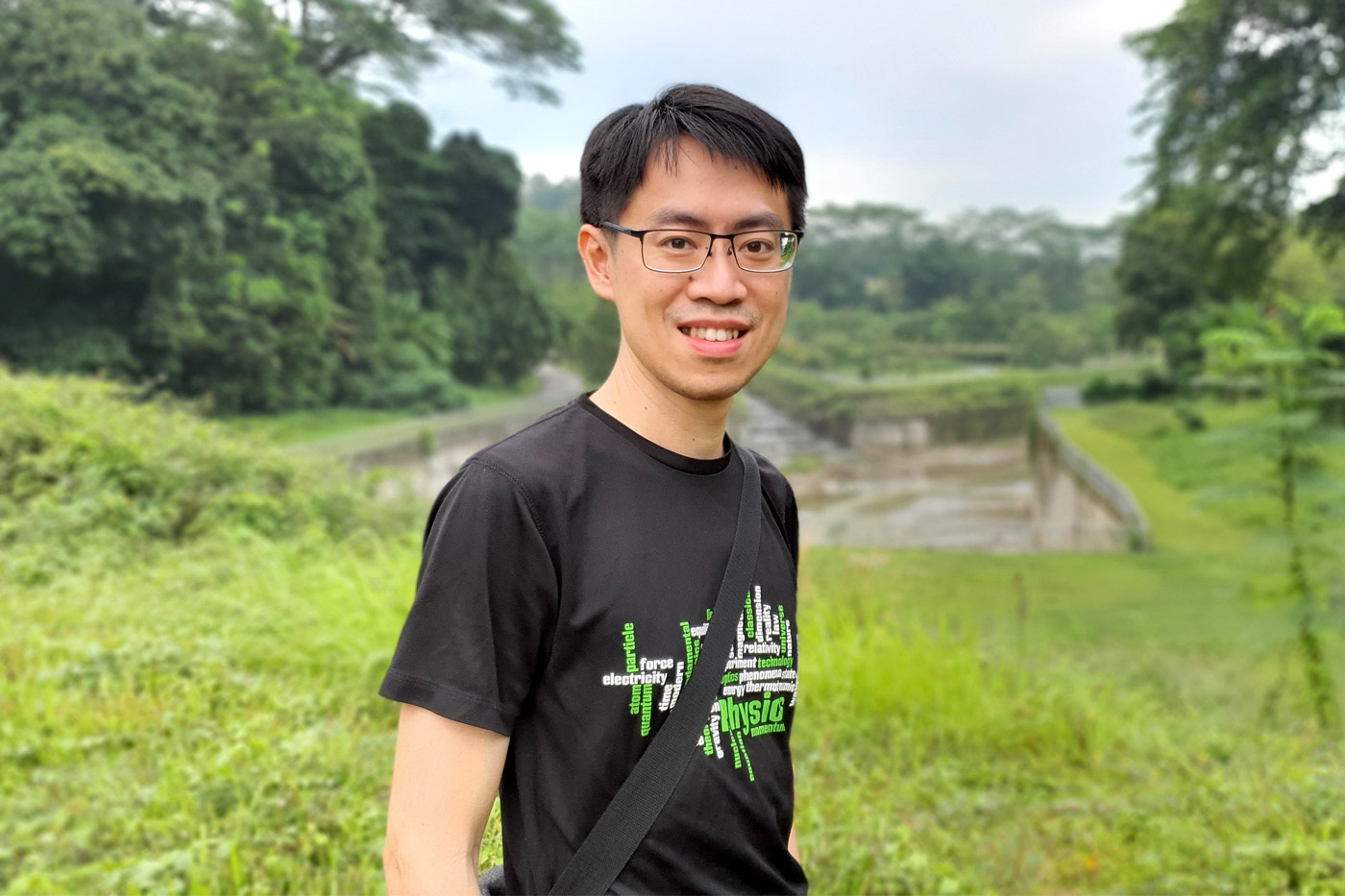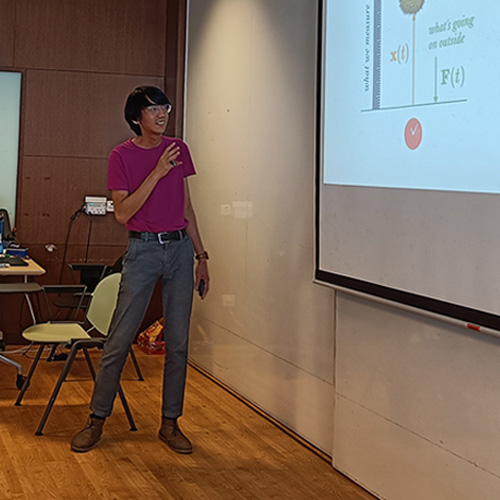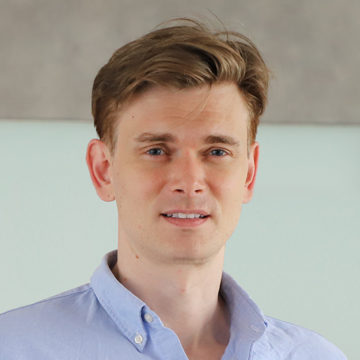Highlights
Meet a CQTian: Haw Jing Yan
 Outside of work, Jing Yan enjoys reading about science, philosophy and faith. He also likes to draw and illustrated for the book Six Quantum Pieces by CQT Principal Investigator Valerio Scarani.
Outside of work, Jing Yan enjoys reading about science, philosophy and faith. He also likes to draw and illustrated for the book Six Quantum Pieces by CQT Principal Investigator Valerio Scarani.
How did you come to be at CQT?
I was actually at CQT during its early days. When I was studying physics during my undergrad at the National University of Singapore (NUS), I did my Undergraduate Research Opportunities Programme in Science (UROPS) project, Final Year Project and a Research Assistant stint with Valerio Scarani’s group. Then in 2013, I left to do my PhD in Australia. I moved to Germany to do a stint as a postdoc, and afterwards came back to Singapore as a postdoc at the NUS Department of Electrical and Computer Engineering. Since March 2022, I’m back at CQT as a Quantum Communications Technologist at the National Quantum-Safe Network (NQSN).
What drew you to quantum?
I was always keen to find the fundamental principles of the world, which led me to study physics. I first learnt about quantum during my undergrad and I was fascinated with how it shattered the classical idea of physical reality.
What would you say are the goals of NQSN?
The NQSN’s key mission is to help Singapore transit to become quantum-safe. By quantum-safe, what we mean is that the data of interest remains secure and private under the quantum computing threat. It is known that many important public-key cryptography algorithms, such as RSA, will be compromised when a large-scale quantum computer, capable of accelerating the ability to solve certain computational problems efficiently, becomes available.
To do this, there are four goals: create a testbed to trial and deploy quantum communication technologies, study the security aspect of these technologies, build and support the quantum ecosystem in Singapore, and developing local standards to guide the initiative.
What does your role as a quantum communications technologist entail?
One of my primary duties is working on the testbed. We are installing network nodes connected by fibre across Singapore. This involves studying the existing fibre infrastructure and seeing what needs to be patched to create the connections between nodes.
I’m also involved in proof-of-concept projects. I help with planning the projects, getting the quantum key distribution (QKD) devices ready, and testing the links between nodes and deployment. For example, we evaluate the technology’s performance and interoperability with the existing hardware and infrastructure. We are working to catalogue as many use-cases as possible for future large-scale deployment of these technologies.
Turning to the more research-oriented aspects of NQSN, we are setting up a quantum security lab where we identify vulnerabilities in quantum devices and build testing and certification methods. Another role I’ve taken is editor of the Quantum Communication Networks Task Force formed under the Telecommunications Standards Advisory Committee of the Infocomm Media Development Authority. The taskforce is co-chaired by Dr Michael Kasper (Fraunhofer Singapore/NQSN) and Dr Hao Qin (NUS-CQT/NQSN) and it aims to develop a local reference specification to guide the implementation of quantum communication networks in Singapore.
I’m starting to be more involved as well in speaking to our partners and stakeholders, such as webinars and panel discussions, bringing a technical perspective.
That sounds like a full portfolio!
It is exciting and bustling season here at NQSN, so we welcome people to join us!
I think working at NQSN would be a valuable experience for anyone because there is a lot of learning involved in our work. We recently had an intern and it was nice to see how an undergrad student can build on their educational background to gain complementary, technical-oriented skills. For me, the experience of using industrial-grade products is very different from my research experience during my PhD studies and postdoc stints. Now I get to use the end products of work done in labs. I also like the chance to introduce new technologies as an insider to someone who may not have the relevant background, which I think is meaningful and interesting.
Is there anything that you are excited to see the development of?
I think NQSN will serve as a seed, growing into a bigger development of quantum communication technologies in Southeast Asia.
On the quantum ecosystem in Singapore, it has been encouraging to see how, increasingly, different stakeholders have a ‘quantum department’, or an in-house quantum expert. Perhaps in the future, quantum experts would be commonplace in companies and organisations, just like IT experts.
What do you enjoy outside of work?
I enjoy reading non-fiction, and I read up a lot about science, philosophy and faith. I also like drawing. There’s the saying that a picture tells a thousand words, and I enjoy being able to convey things through drawing. When I was a student, my notes always had random scribbles on them. Coincidentally, Valerio asked me about them one day and I ended up illustrating some cartoons for his book, Six Quantum Pieces.
Would you like to share anything else about yourself that other people might be surprised to know?
I’m a Christian, and I find that when I say that I’m a Christian or a scientist to different communities, people are surprised – perhaps because there’s a perception that science and faith are opposed. In contrast, I think that they are complementary approaches to how we seek truth and understand the world. For me, I think both help to form a more holistic worldview.
Learn more
Related Stories
 | Meet a CQTian: Zaw Lin Htoo September 16 2022 |
 | Meet a CQTian: Valerio Scarani September 12 2022 |
 | Meet a CQTian: Patrick Rebentrost November 14 2022 |






